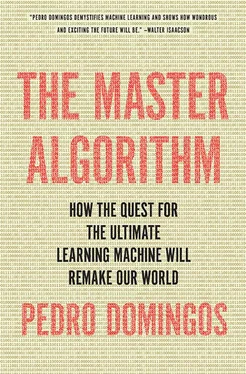This does not mean that there is nothing to worry about, however. The first big worry, as with any technology, is that AI could fall into the wrong hands. If a criminal or prankster programs an AI to take over the world, we’d better have an AI police capable of catching it and erasing it before it gets too far. The best insurance policy against vast AIs gone amok is vaster AIs keeping the peace.
The second worry is that humans will voluntarily surrender control. It starts with robot rights, which seem absurd to me but not to everyone. After all, we already give rights to animals, who never asked for them. Robot rights might seem like the logical next step in expanding the “circle of empathy.” Feeling empathy for robots is not hard, particularly if they’re designed to elicit it. Even Tamagotchi, Japanese “virtual pets” with all of three buttons and an LCD screen, do it quite successfully. The first humanoid consumer robot will set off a race to make more and more empathy-eliciting robots, because they’ll sell much better than the plain metal variety. Children raised by robot nannies will have a lifelong soft spot for kindly electronic friends. The “uncanny valley”-our discomfort with robots that are almost human but not quite-will be unknown to them because they grew up with robot mannerisms and maybe even adopted them as cool teenagers.
The next step in the insidious progression of AI control is letting them make all the decisions because they’re, well, so much smarter. Beware. They may be smarter, but they’re in the service of whoever designed their score functions. This is the “Wizard of Oz” problem. Your job in a world of intelligent machines is to keep making sure they do what you want, both at the input (setting the goals) and at the output (checking that you got what you asked for). If you don’t, somebody else will. Machines can help us figure out collectively what we want, but if you don’t participate, you lose out-just like democracy, only more so. Contrary to what we like to believe today, humans quite easily fall into obeying others, and any sufficiently advanced AI is indistinguishable from God. People won’t necessarily mind taking their marching orders from some vast oracular computer; the question is who oversees the overseer. Is AI the road to a more perfect democracy or to a more insidious dictatorship? The eternal vigil has just begun.
The third and perhaps biggest worry is that, like the proverbial genie, the machines will give us what we ask for instead of what we want. This is not a hypothetical scenario; learning algorithms do it all the time. We train a neural network to recognize horses, but it learns instead to recognize brown patches, because all the horses in its training set happened to be brown. You just bought a watch, so Amazon recommends similar items: other watches, which are now the last thing you want to buy. If you examine all the decisions that computers make today-who gets credit, for example-you’ll find that they’re often needlessly bad. Yours would be too, if your brain was a support vector machine and all your knowledge of credit scoring came from perusing one lousy database. People worry that computers will get too smart and take over the world, but the real problem is that they’re too stupid and they’ve already taken over the world.
Evolution, part 2
Even if computers today are still not terribly smart, there’s no doubt that their intelligence is rapidly increasing. As early as 1965, I. J. Good, a British statistician and Alan Turing’s sidekick on the World War II Enigma code-breaking project, speculated on a coming intelligence explosion. Good pointed out that if we can design machines that are more intelligent than us, they should in turn be able to design machines that are more intelligent than them, and so on ad infinitum, leaving human intelligence far behind. In a 1993 essay, Vernor Vinge christened this “the Singularity.” The concept has been popularized most of all by Ray Kurzweil, who argues in The Singularity Is Near that not only is the Singularity inevitable, but the point where machine intelligence exceeds human intelligence-let’s call it the Turing point-will arrive within the next few decades.
Clearly, without machine learning-programs that design programs-the Singularity cannot happen. We also need sufficiently powerful hardware, but that’s coming along nicely. We’ll reach the Turing point soon after we invent the Master Algorithm. (I’m willing to bet Kurzweil a bottle of Dom Pérignon that this will happen before we reverse engineer the brain, his method of choice for bringing about human-level AI.) Pace Kurzweil, this will not, however, lead to the Singularity. It will lead to something much more interesting.
The term singularity comes from mathematics, where it denotes a point at which a function becomes infinite. For example, the function 1/ x has a singularity when x is 0, because 1 divided by 0 is infinity. In physics, the quintessential example of a singularity is a black hole: a point of infinite density, where a finite amount of matter is crammed into infinitesimal space. The only problem with singularities is that they don’t really exist. (When did you last divide a cake among zero people, and each one got an infinite slice?) In physics, if a theory predicts something is infinite, something’s wrong with the theory. Case in point, general relativity presumably predicts that black holes have infinite density because it ignores quantum effects. Likewise, intelligence cannot continue to increase forever. Kurzweil acknowledges this, but points to a series of exponential curves in technology improvement (processor speed, memory capacity, etc.) and argues that the limits to this growth are so far away that we need not concern ourselves with them.
Kurzweil is overfitting. He correctly faults other people for always extrapolating linearly-seeing straight lines instead of curves-but then falls prey to a more exotic malady: seeing exponentials everywhere. In curves that are flat-nothing happening-he sees exponentials that have not taken off yet. But technology improvement curves are not exponentials; they are S curves, our good friends from Chapter 4. The early part of an S curve is easy to mistake for an exponential, but then they quickly diverge. Most of Kurzweil’s curves are consequences of Moore’s law, which is on its last legs. Kurzweil argues that other technologies will take the place of semiconductors and S curve will pile on S curve, each steeper than the previous one, but this is speculation. He goes even further to claim that the entire history of life on Earth, not just human technology, shows exponentially accelerating progress, but this perception is at least partly due to a parallax effect: things that are closer seem to move faster. Trilobites in the heat of the Cambrian explosion could be forgiven for believing in exponentially accelerating progress, but then there was a big slowdown. A Tyrannosaurus Ray would probably have proposed a law of accelerating body size. Eukaryotes (us) evolve more slowly than prokaryotes (bacteria). Far from accelerating smoothly, evolution proceeds in fits and starts.
To sidestep the problem that infinitely dense points don’t exist, Kurzweil proposes to instead equate the Singularity with a black hole’s event horizon, the region within which gravity is so strong that not even light can escape. Similarly, he says, the Singularity is the point beyond which technological evolution is so fast that humans cannot predict or understand what will happen. If that’s what the Singularity is, then we’re already inside it. We can’t predict in advance what a learner will come up with, and often we can’t even understand it in retrospect. As a matter of fact, we’ve always lived in a world that we only partly understood. The main difference is that our world is now partly created by us, which is surely an improvement. The world beyond the Turing point will not be incomprehensible to us, any more than the Pleistocene was. We’ll focus on what we can understand, as we always have, and call the rest random (or divine).
Читать дальше












